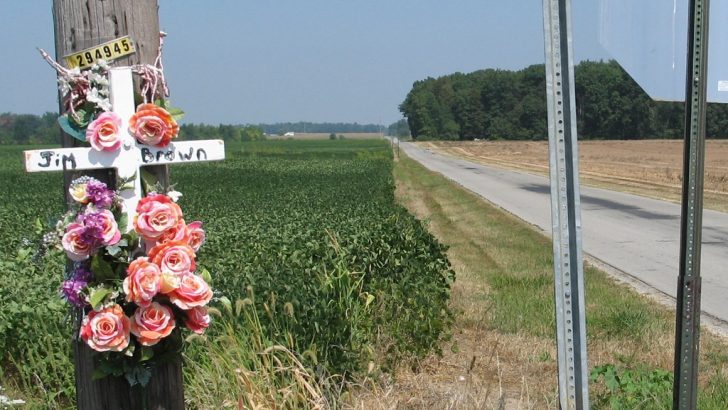Mainly About Books by the Books Editor
We are all aware of the major shrines of Ireland, and of the customs associated with them: Knock, Croagh Patrick and Lough Derg are part of Irish culture. Then there are the holy wells, and the little places associated with more local saints, well favoured across a couple of counties.
But below these long established and public shrines, there is another layer, a more private, little noticed layer, of what we might call the private shrines of Ireland. Or perhaps we might call them the personal shrines for they can hardly be called private as they are nearly all in quite public places.
In his recent novel, Travelling a Strange Land (Bloomsbury, £12.99), Ulster writer David Park, comes to terms with pain, loss and memory. In this very moving and very human tale, there is a brief evocation of Roselawn Cemetery, the civic graveyard in Belfast opened in 1954.
A young man for a university project has a film to make and wants to shoot it in the cemetery, as he tells his father: “I don’t mean to shock you or anything but yes that’s where. There’s is a part of it I saw and it’s a separate section from all the rows of headstones. It’s not like anything I’ve ever seen. I went back on my own and took some photographs. …it’s a part of the cemetery where people have personalised the burial place of whoever – it’s really weird, with plastic flowers, football scarves and figures, all sort of ornaments and decorations on the branches of trees.
“And there’s lots of wind chimes so I thought I would incorporate them in the music…it’s not a place that feels it’s to do with death, so much as the lives that people once had. It feels like it’s full of their memories.”
Modern funerals
Just as the Irish bishops seem to deprecate the personalisation of modern funerals, much to the distress of families, so cemetery authorities seem always to want to lay the head stone flat and keep them clear of what they may well see as rubbish in the great cause of propriety and tidiness. On the whole those are not virtues much appreciated by humanity at large.
This set my thinking about other little shrines. One is a site I pass every week on my way into this paper: the doorway in Kildare Street where a homeless young man died. It faces not only the Dáil, but a popular city hotel. Small items and little cards still decorate it, and are added to from time to time.
In the little park in Ranelagh on the lid of a pump cover in the little lake has been set out a shrine to the memory of a local child who died as a result of an accident in the lake. Recently the winter winds knocked over the little array of items, little statues and so on, all with family associations. Doubtless they will soon be replaced.
Along the banks of the Grand Canal at several of the locks which are used by local children for summer swims there are occasional shrines to those who have drowned: papers tacked to the trees, ribbons, pictures, beads and other things.
On the Grand Canal one of those memorials is near to the Patrick Kavanagh seat. But that seat arose from a poem the poet wrote about a memorial seat to Mrs Dermot O’Brien. That was swept away by the Board of Works and later a little plaque had to be set there in the ground to rededicate its replacement to Mrs O’Brien.
The poet and the drowned boy are recalled by many and by a few. One cannot go round the country without seeing such things too. Though I never recall seeing anything ever laid for long at any political monument. The little shrines are very different from those often contrived memorials. These little places have real meaning for people, even for complete strangers merely passing by.
One feels human warmth that these other little shrines arise out of our love and a deep human feeling, a feeling that I think is very real to all of us.


 Peter Costello
Peter Costello Token memorial
Token memorial 